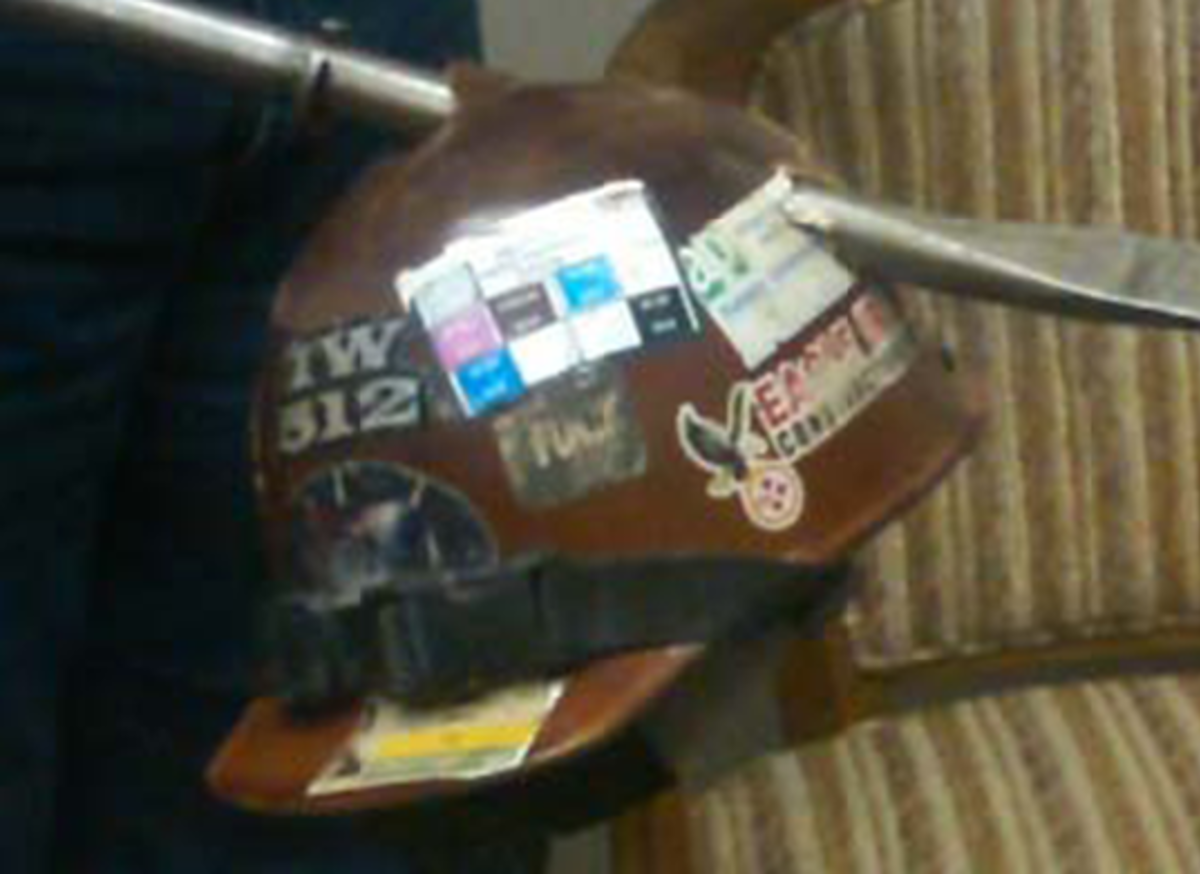Near-miss: falling object
- Safety Flash
- Published on 10 November 2010
- Generated on 30 December 2025
- IMCA SF 07/10
- 2 minute read
Jump to:
A Member has reported an incident in which a falling object hit and destroyed someone’s hard hat.
What happened?
Two third-party ironworkers were setting the upper section of a structural steel tower. Having set the section in place one worker left the immediate structure area and boarded the aerial lift so that he could access the very upper structure of the tower section, in order to release the rigging from the mobile crane used to set the tower. The other worker (approximately 10 metres below) continued to tighten the bolts of the upper section to the already established lower section using an impact wrench.
As the worker was manoeuvring the basket of the aerial lift, and properly tied off, his safety lanyard got caught on his tools (attached to his tool belt) and flipped a sleever bar sideways in its sheath causing the bar to flip out and fall. The bar fell and struck the hard hat of the worker piercing the hard hat. The hard hat fell off the worker and fell an additional distance to the ground below. There were no injuries.
At the time of the incident a ground person was assigned as a dedicated safety watch to make sure no one entered the work area as the two workers were positioning and attaching the tower section. Additionally, the area had been barricaded with a danger tape.

Hard hat destroyed by falling sleever bar
The following corrective actions were suggested:
- Only tools essential to complete assigned tasks should be carried in tool belts.
- More appropriate tool belts and holders should be developed to prevent tools falling from height.
- Persons should not work directly below areas where work at height is being conducted.
- Emphasis to employees of the importance of full communications and heightened safety awareness when working in areas where overhead fall object hazards exist.
Members' attention is drawn to IMCA safety promotional material on working at height and dropped objects:
- Pocket Safety Cards:
- Safety Posters:
- Video
IMCA Safety Flashes summarise key safety matters and incidents, allowing lessons to be more easily learnt for the benefit of the entire offshore industry.
The effectiveness of the IMCA Safety Flash system depends on the industry sharing information and so avoiding repeat incidents. Incidents are classified according to IOGP's Life Saving Rules.
All information is anonymised or sanitised, as appropriate, and warnings for graphic content included where possible.
IMCA makes every effort to ensure both the accuracy and reliability of the information shared, but is not be liable for any guidance and/or recommendation and/or statement herein contained.
The information contained in this document does not fulfil or replace any individual's or Member's legal, regulatory or other duties or obligations in respect of their operations. Individuals and Members remain solely responsible for the safe, lawful and proper conduct of their operations.
Share your safety incidents with IMCA online. Sign-up to receive Safety Flashes straight to your email.